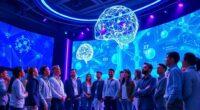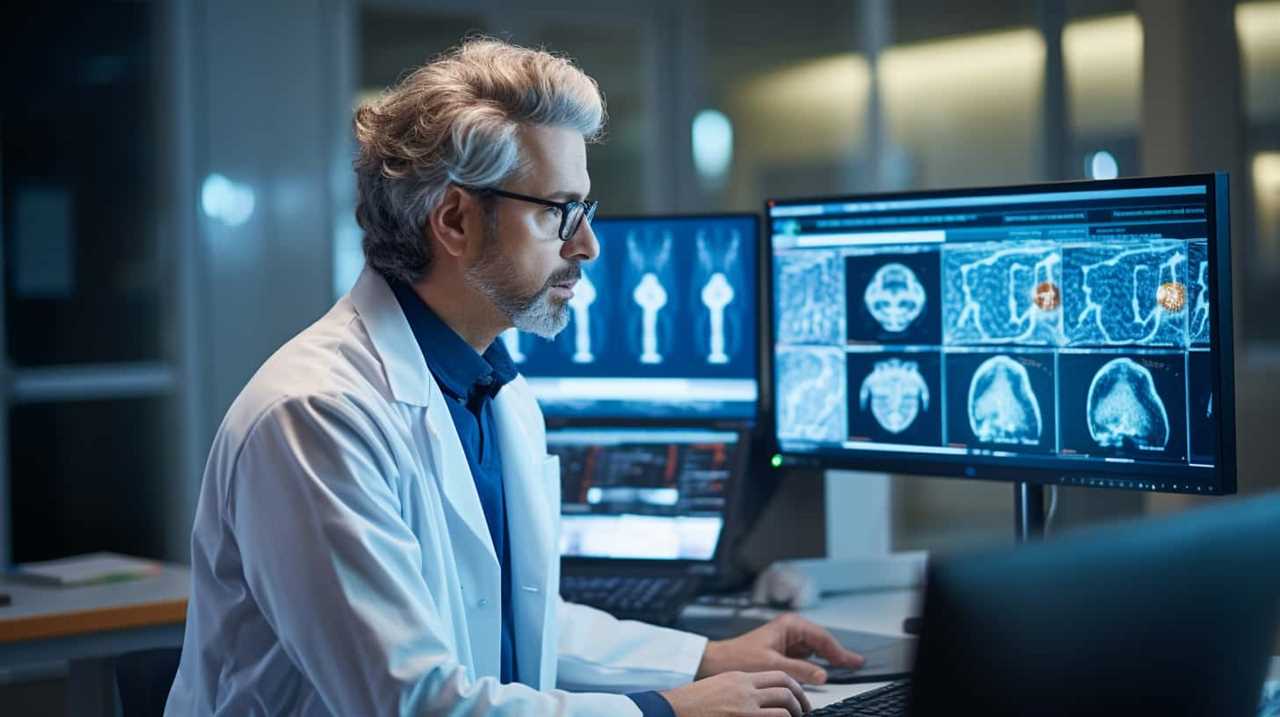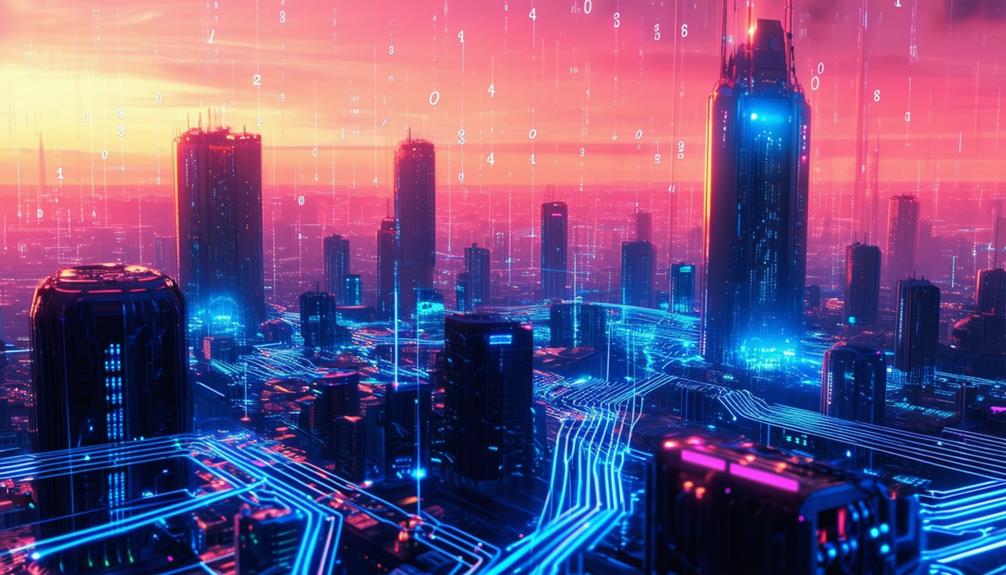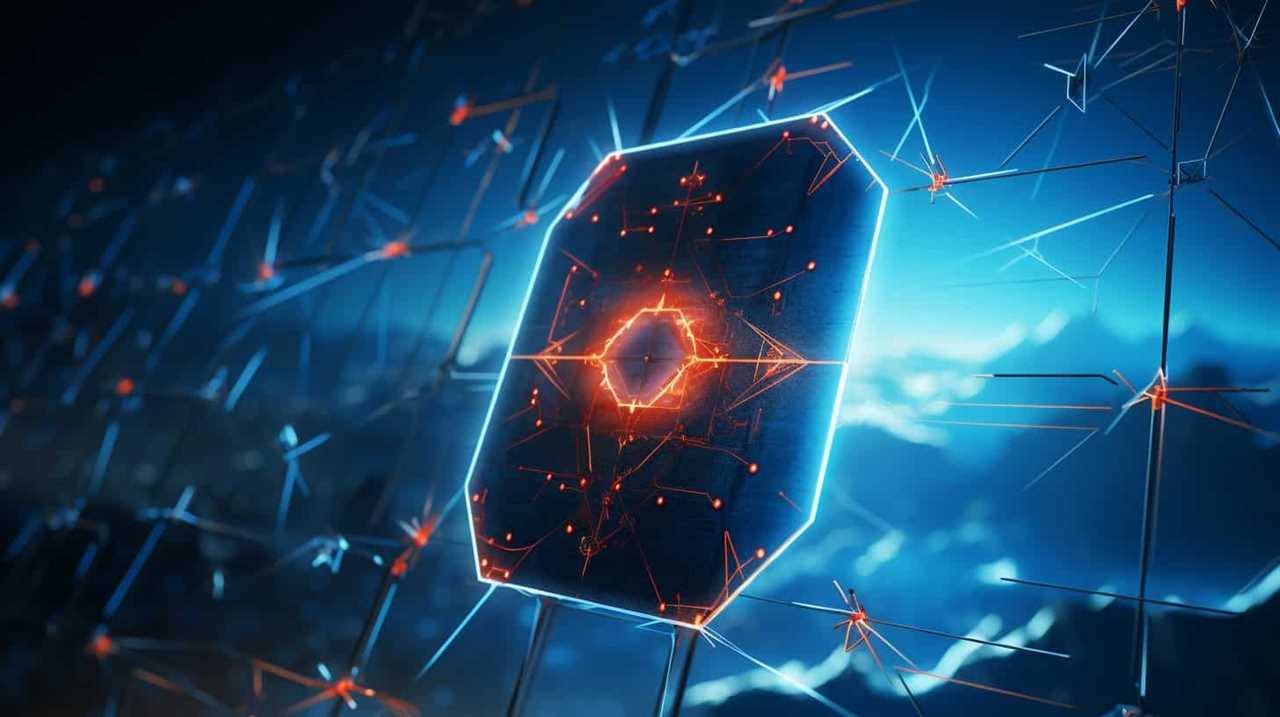By 2025, open source AI will be driven by a balancing act between community-driven ethics and transparency and corporate ambitions for profit and rapid deployment. You’ll see collaborations and conflicts emerge over licensing, control, and responsible use. While communities focus on ethical development, companies may seek proprietary advantages. Staying aware of this tension is key, and if you explore further, you’ll uncover more about how these forces shape the future of AI.
Key Takeaways
- Community-driven open source AI projects will emphasize transparency, collaboration, and ethical considerations, shaping responsible development practices.
- Corporations will pursue proprietary features and rapid commercialization, potentially creating tensions with community values.
- Licensing complexities will increase, requiring clear legal frameworks to balance open sharing and commercialization of AI models.
- Collaboration between community initiatives and corporate interests can foster innovation while addressing ethical and legal challenges.
- Global policies and societal impacts will influence open source AI development, emphasizing the need for responsible governance and ethical standards.

Have you wondered how open source AI will shape the landscape by 2025? The rapid evolution of open source AI projects promises exciting opportunities but also raises critical questions about ethical implications and licensing challenges. As more developers and organizations contribute to open source AI, you’ll find yourself steering a complex web of responsibilities to guarantee these powerful tools are used responsibly. Open source AI democratizes access, enabling anyone with technical skills to build, modify, and deploy models. However, this accessibility comes with the risk of misuse or unintended consequences, making ethical considerations more essential than ever. You’ll need to stay vigilant about how AI outputs might be biased, manipulated, or used maliciously, especially as models become more sophisticated and integrated into daily life. The community-driven nature of open source AI fosters collaboration and transparency, but it also complicates licensing issues. Unlike proprietary software, open source projects often rely on licenses that dictate how code can be shared and modified. Negotiating these licensing challenges can be tricky, especially when different projects adopt varying license types—some permissive, others more restrictive. You might find yourself in gray areas where you need to understand whether you can commercialize a particular model or redistribute modified versions without legal repercussions. As open source AI grows in prominence, debates around licensing will intensify, prompting you to stay informed about evolving legal frameworks and best practices. The tension between community development and corporate interests will also influence how open source AI evolves by 2025. While community-driven projects prioritize transparency, collaboration, and ethical standards, corporations may push for proprietary features, faster commercialization, or licensing arrangements that limit open access. This dynamic can lead to conflicts over control, intellectual property, and the direction of AI development. But it also creates opportunities for synergy, where community values and corporate resources combine to produce safer, more ethical AI tools. As a user or developer, you’ll need to think about who’s driving the projects you rely on and how their motivations align with broader societal interests. Additionally, understanding the role of national developments in shaping AI policies will be crucial for navigating this landscape. Ultimately, the future of open source AI in 2025 hinges on balancing these competing forces—community ethics, licensing challenges, and corporate involvement—to guarantee that AI advances benefit everyone responsibly. Staying informed and actively participating in discussions about ethical implications and licensing will be essential as you steer this rapidly changing landscape.
Frequently Asked Questions
How Will Open Source AI Impact Global AI Accessibility?
Open source AI will markedly improve global accessibility by lowering democratization barriers, making advanced tools available to everyone. You’ll find more diverse voices contributing, which sparks innovation incentives and accelerates development. This openness empowers individuals and smaller organizations, reducing reliance on corporate giants. As a result, you’ll see a more inclusive AI landscape where innovation thrives, and AI benefits reach underserved communities worldwide, fostering a truly global technological evolution.
What Are the Major Challenges for Community-Led AI Projects?
You face enormous challenges in community-led AI projects, like tackling sustainability issues that threaten their long-term survival and developing governance frameworks that prevent chaos. Without clear rules, projects risk spiraling into disorder, losing focus, or burning out contributors. Balancing transparency with security feels like walking a tightrope. These hurdles could make or break the future of open source AI, demanding your resilience and innovation to keep progress moving forward.
How Will Corporate Interests Influence Open Source AI Transparency?
Corporate interests will likely influence open source AI transparency by prioritizing profit motives, which can lead to transparency challenges. You might find companies withholding certain details or limiting access to proprietary enhancements to protect their investments. While some firms may promote transparency to build trust, others could obscure processes to maintain competitive edges. As a result, balancing corporate goals with open transparency will remain a critical issue for the community.
Will Open Source AI Be Secure Against Malicious Use?
Open source AI can be vulnerable to malicious exploitation if security vulnerabilities aren’t properly addressed. You should stay vigilant by actively monitoring updates and patches from the community. While transparency helps identify weaknesses quickly, it also means malicious actors could exploit known flaws. To keep your systems secure, always implement robust security measures, collaborate with trusted developers, and stay informed about emerging threats and best practices in AI security.
How Can Collaboration Between Communities and Corporations Be Improved?
You can improve collaboration by fostering community trust through transparency and open communication. Establish clear guidelines and shared goals to align interests. Additionally, develop sustainable funding models that support both community-driven projects and corporate investments, ensuring long-term commitment. By balancing transparency with financial stability, you create an environment where communities and corporations work synergistically, driving innovation while maintaining trust and accountability in open source AI development.
Conclusion
By 2025, open source AI is like a bustling garden where both community and corporate gardeners tend to different plants. When a small team crafted an innovative tool, it spread rapidly, proving that grassroots efforts can spark major breakthroughs. As more organizations join this shared effort, the landscape becomes richer and more diverse. Embrace this collaborative spirit, because together, you’re cultivating the future of AI—one seed at a time.









